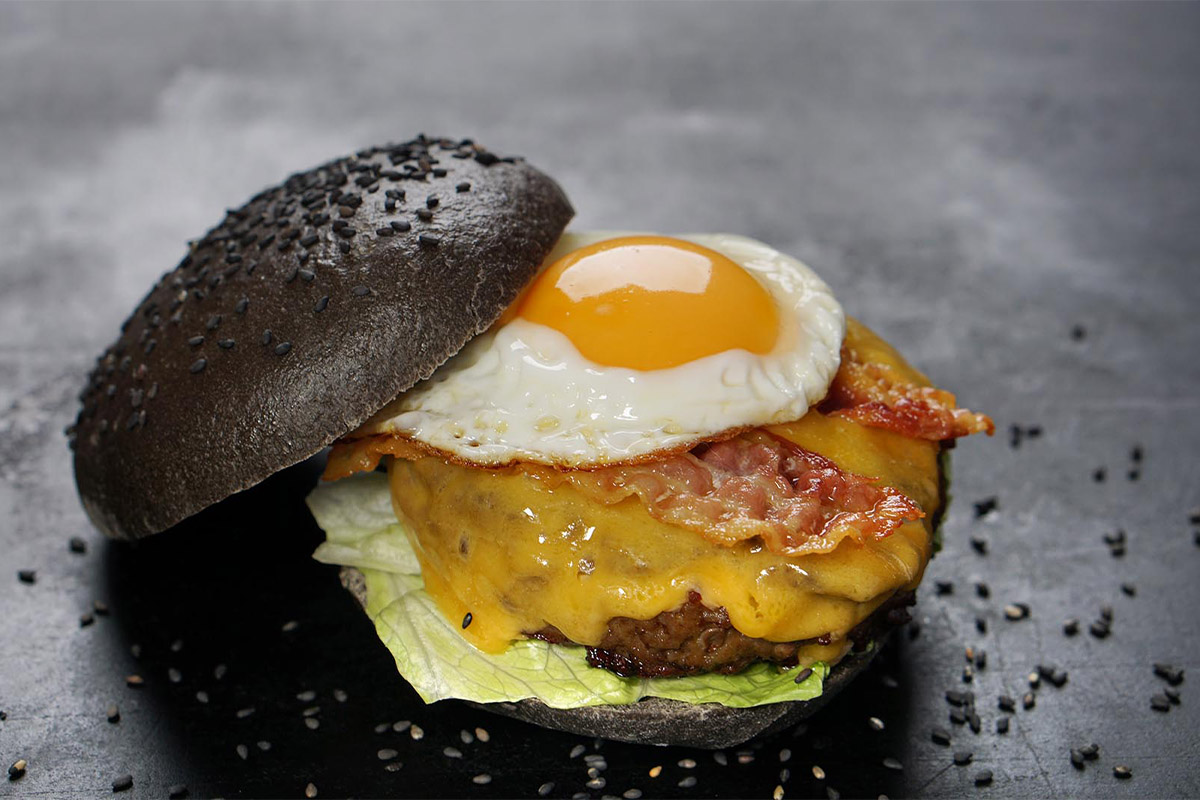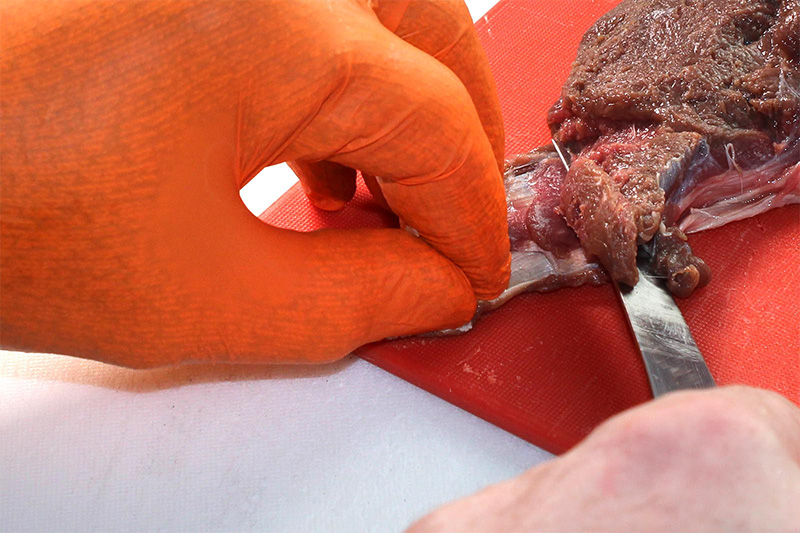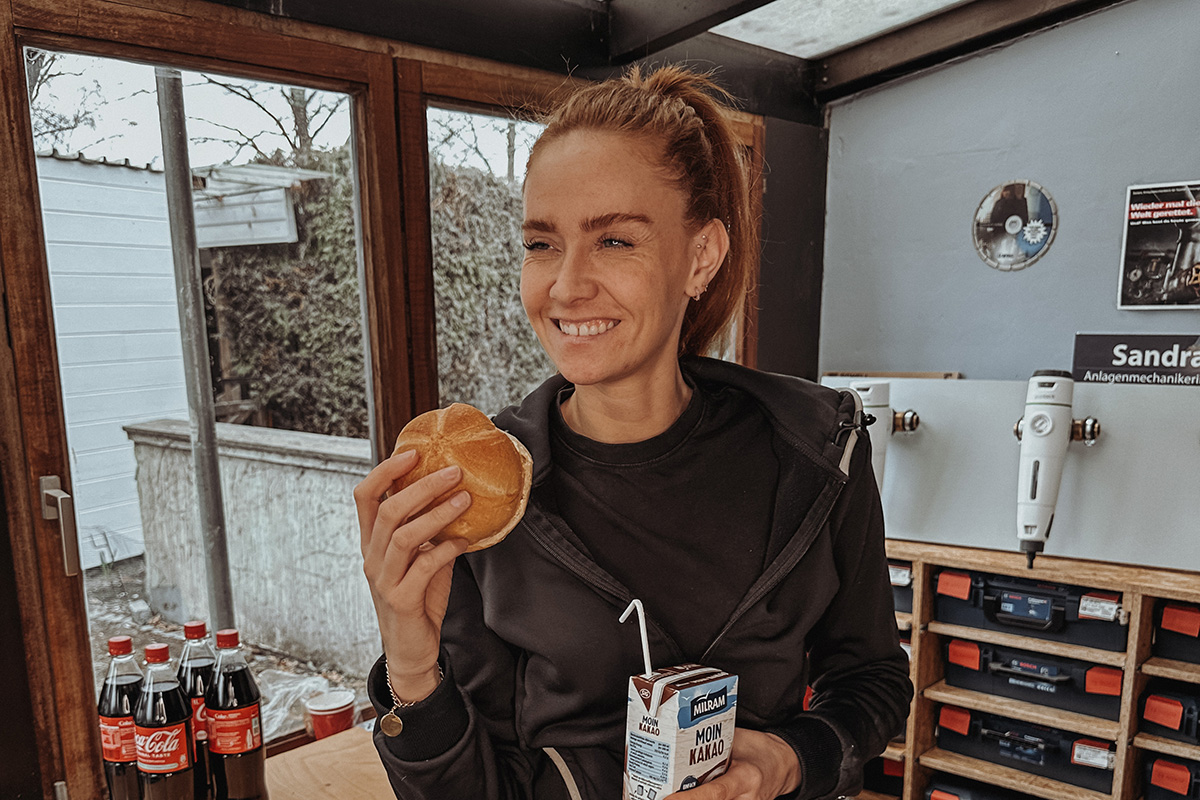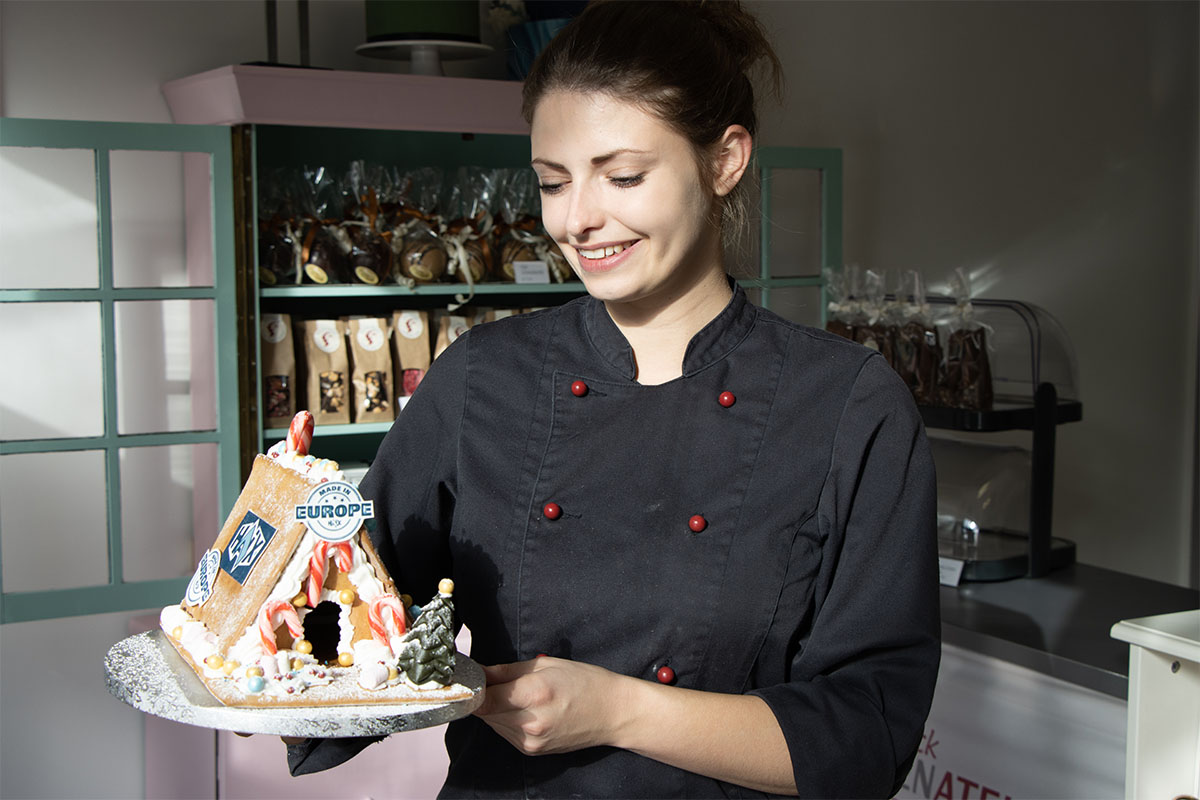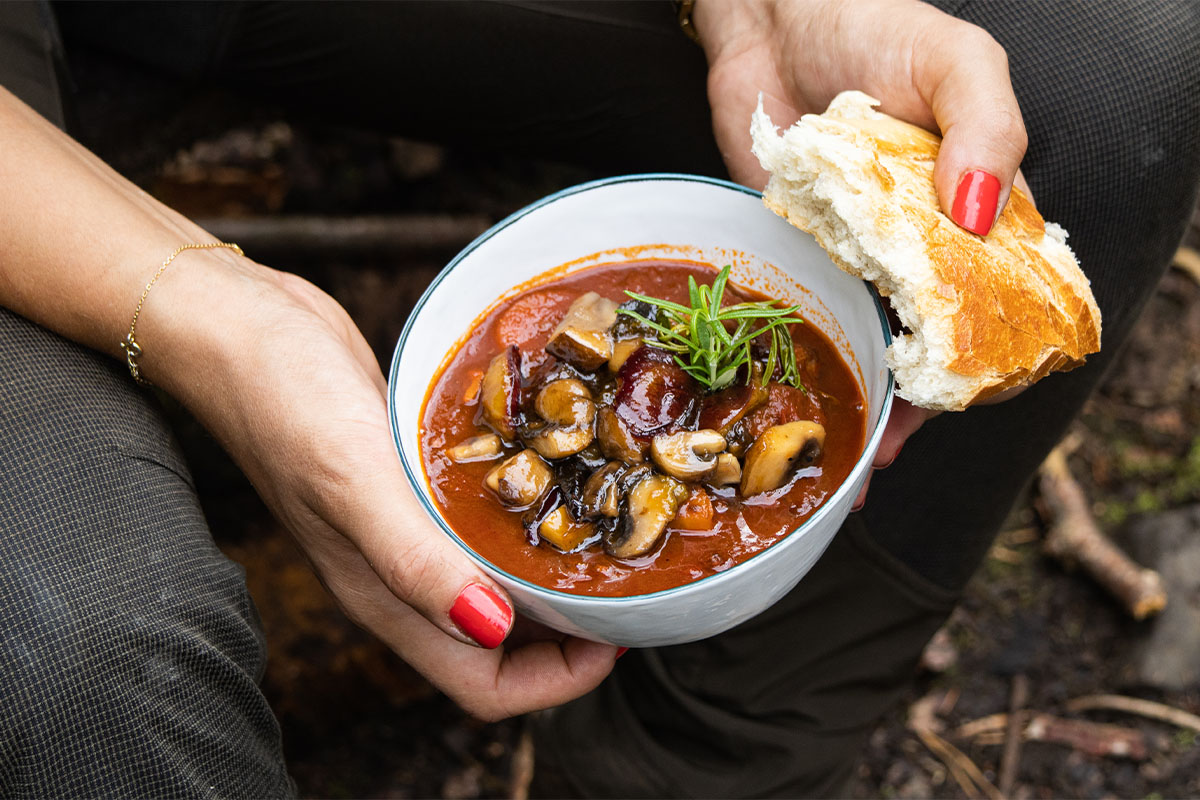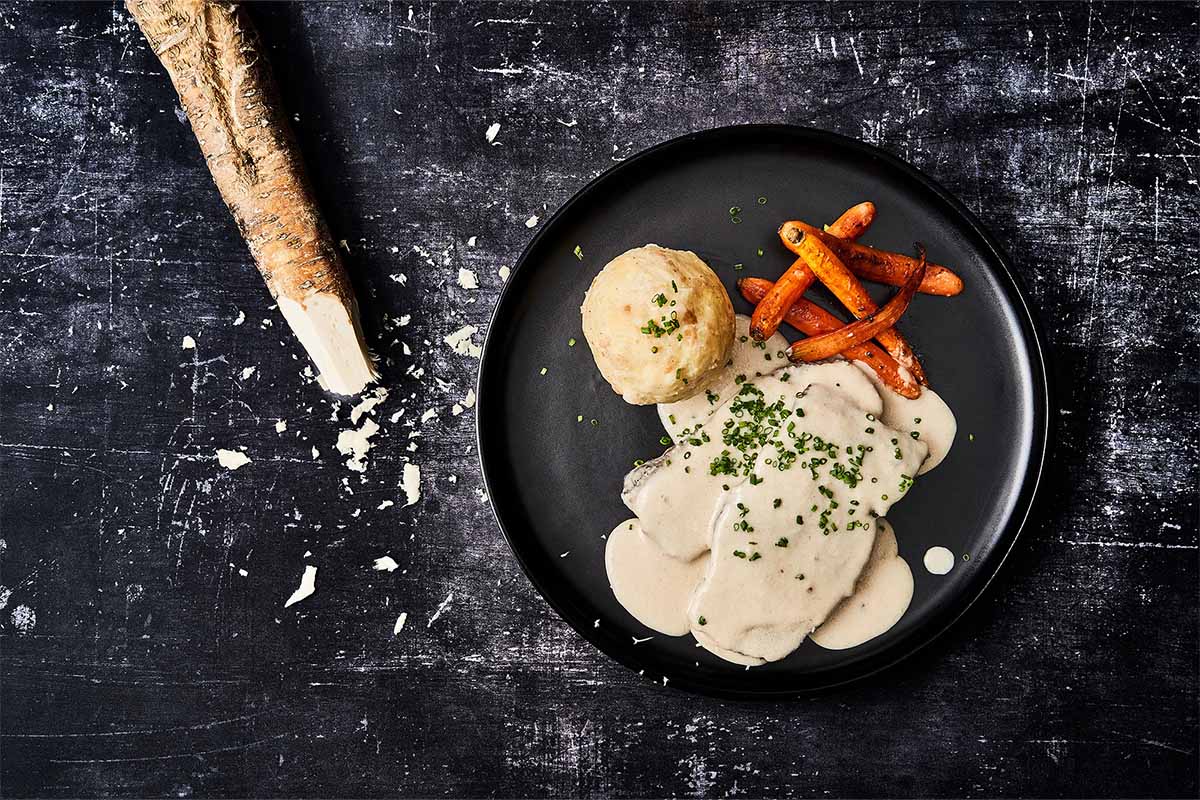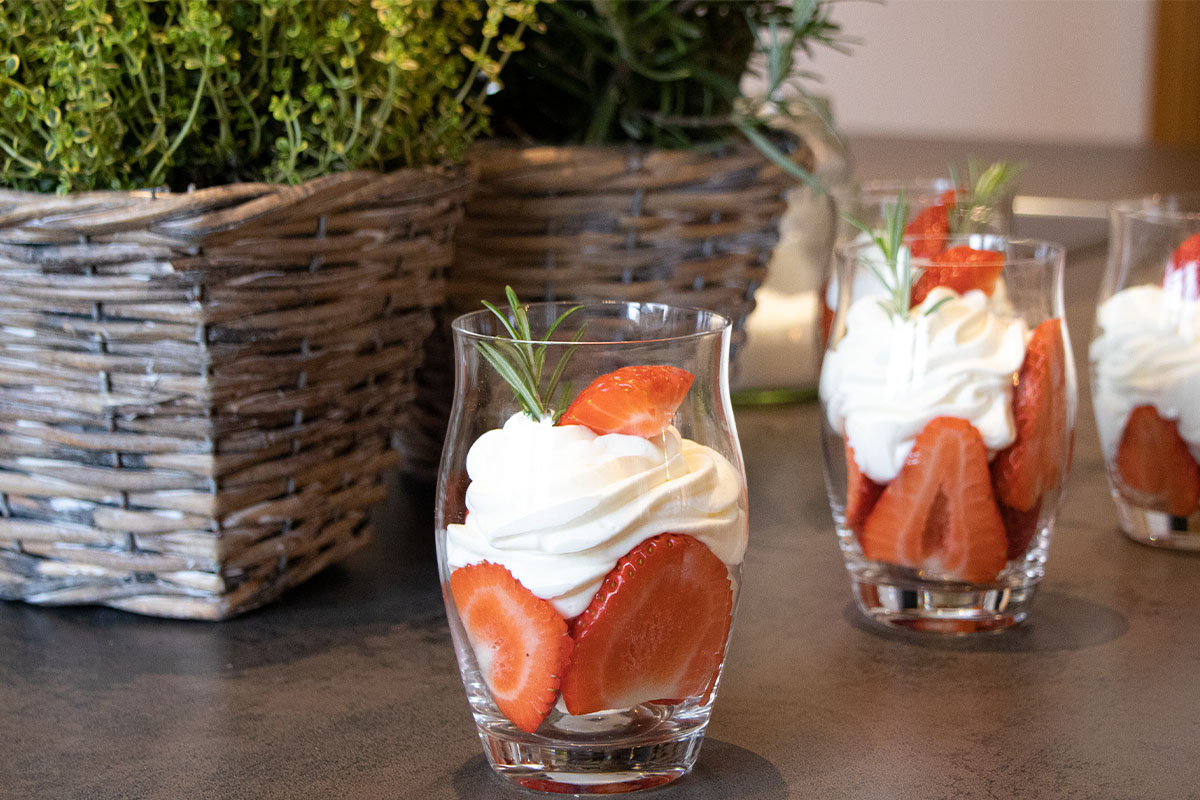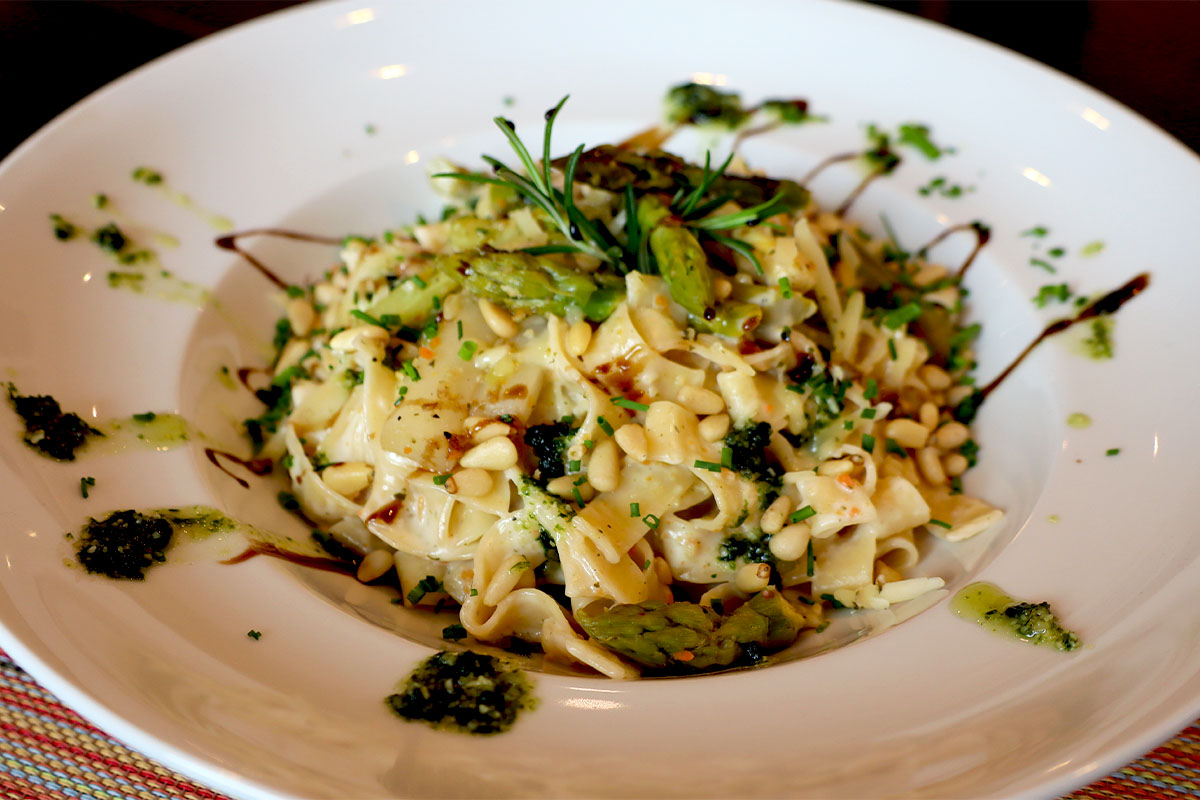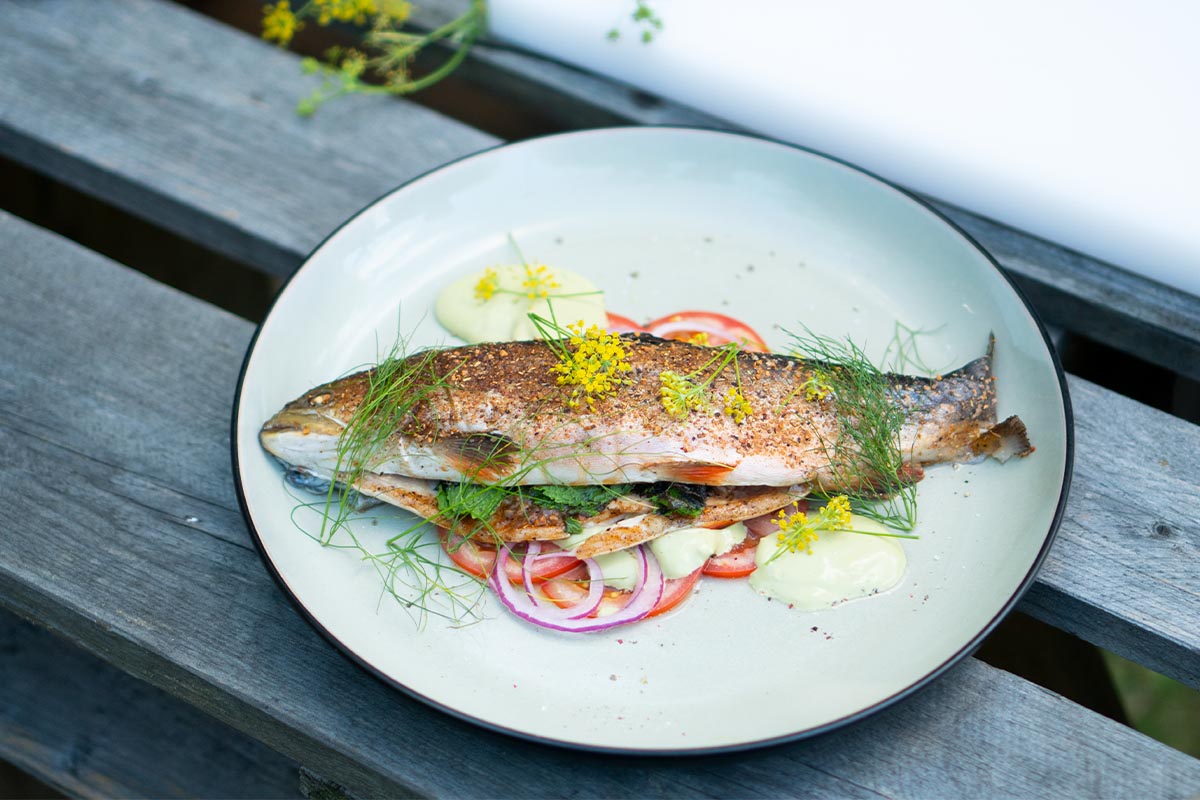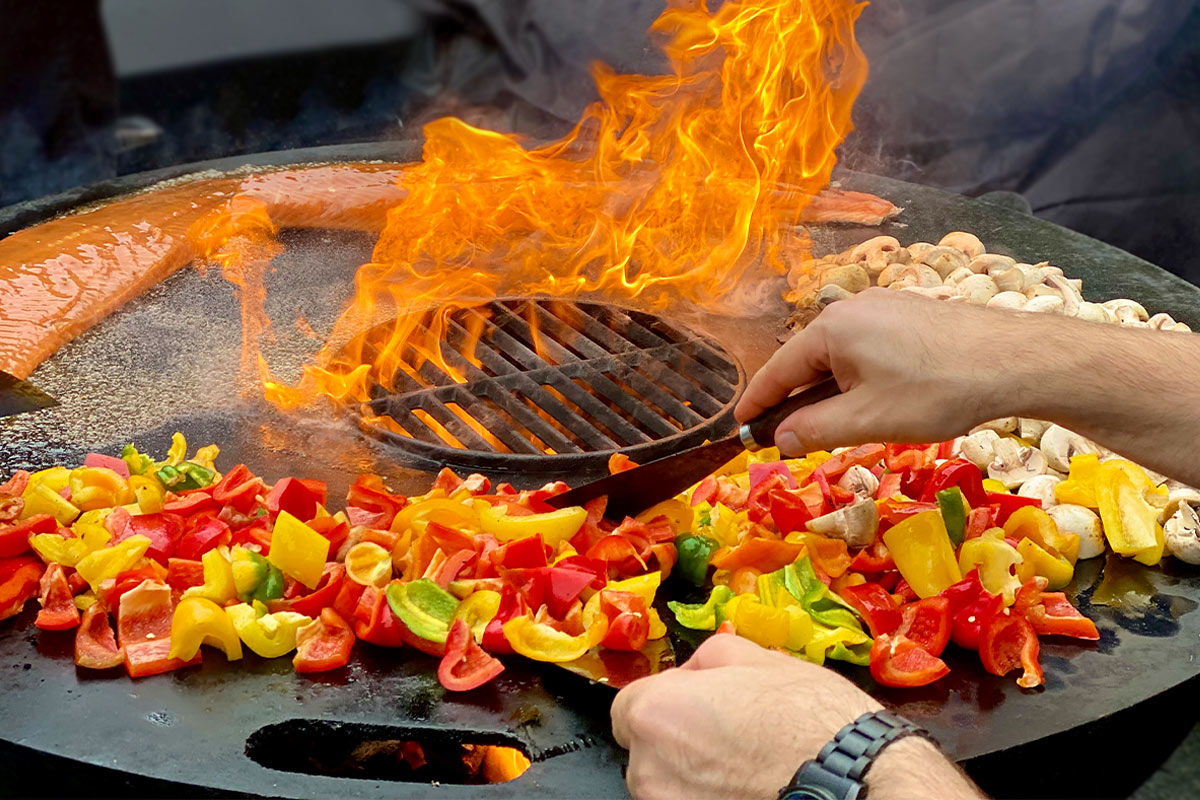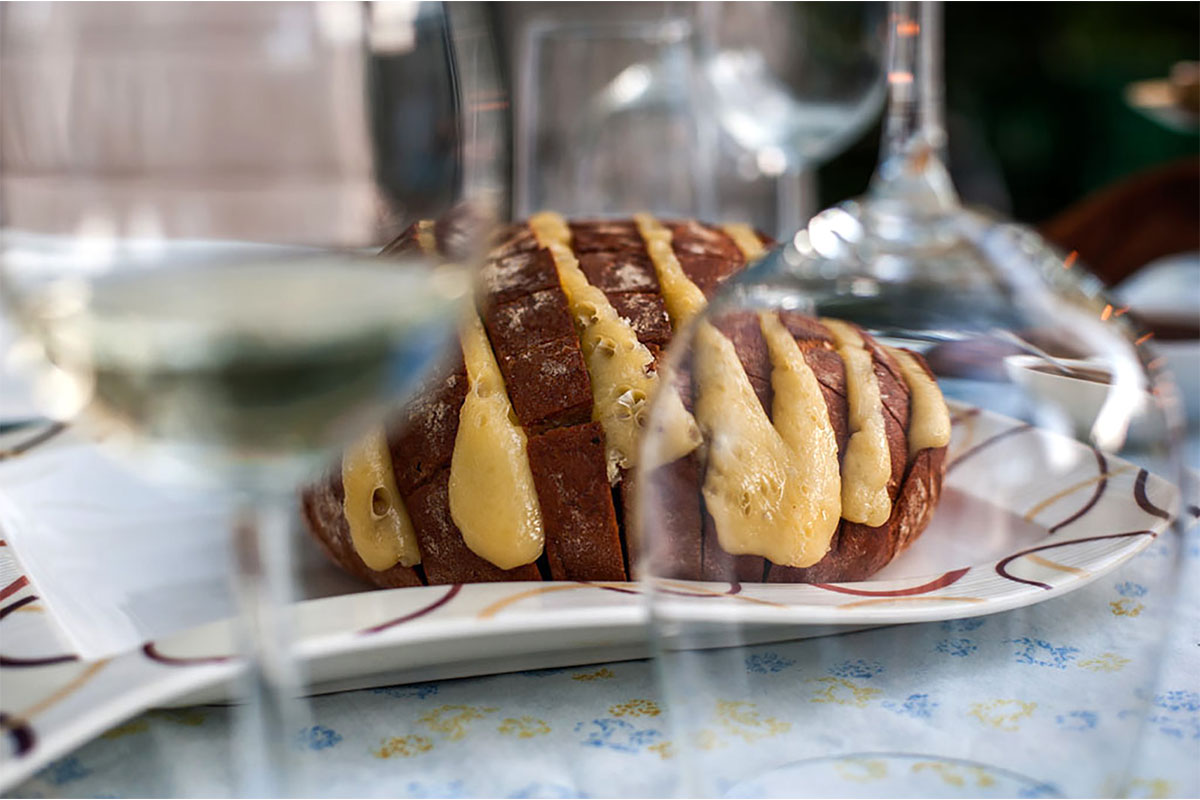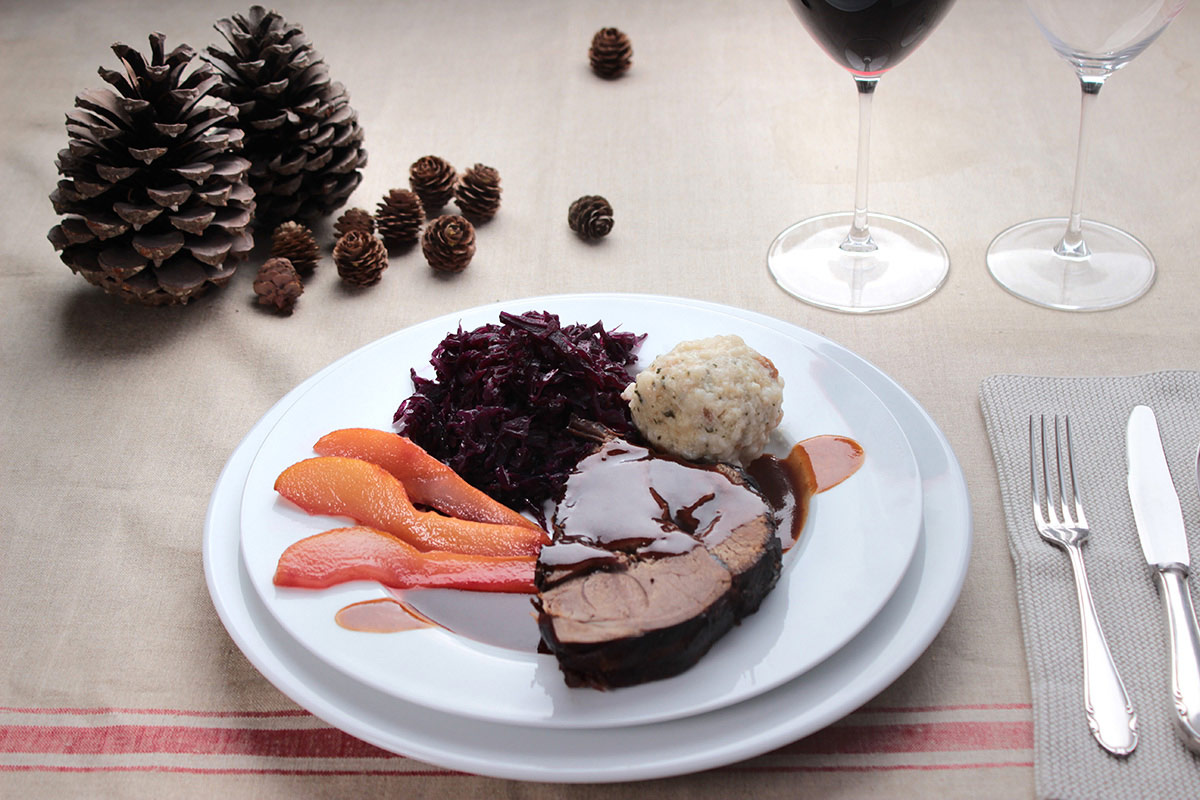Roast wild boar, cutlets, schnitzel, fillet or leg of young boar are palate-pleasers that have long been featured on restaurant menus. That the less succulent parts are almost treated like waste is difficult to understand, especially once you’ve tasted Werner’s Wild Burgers. The ground meat patties made from wild boar are eye-catching and the stars on any grill.
Gently and precisely, like a warm knife through a piece of fresh butter, the razor-sharp blade glides along the sinews. A last, clean cut and the knuckle of wild boar has been boned. “I usually use the morsels of meat that are left over after dismembering and cutting up the animal,” said Werner Steckmann, referring to the less coveted pieces, such as the stomach and the neck, which often remain unused. Piece by piece, the Franconian hunter places the carefully gleaned boar meat on a flat platter. Cleanly boned, with sinews removed, the meat is chilled, put through a meat grinder, and pressed into 200-gram patties in a prefabricated form.
Most people who try wild boar meat are quickly won over by its taste and its juicy consistency, resulting from its fat content. “Actually, wild boar is much leaner than meat from domestic pigs,” said the ambitious hunter, cook and blogger. Werner also values sustainability: When the 54-year-old with the distinctive full beard ties his HAIX boots before hunting, his focus is not on killing or bagging a trophy. Instead, he is thinking about nature. Werner wants to use everything a slain animal has to offer, but not as a temporary expedient – his goal is a taste experience comparable to the tenderest of fillets.
During the closed season from February through April, what mainly awaits the hard-driving hunter is preparatory work in the hunting ground for the next season. Climbing stands and box stands have to be secured and branches and bushes pruned away, bait stations need to be set up and the cameras at the hot spots in the hunting ground need to be reactivated. Werner is in his element. Because the wild boar population is mushrooming in Germany and the bristly hogs are justly suspected of spreading African swine fever, which is also deadly for domestic pigs, closed season for wild boars has been canceled.
“If you can find any there now,” intoned Werner with the passion of a hunter, in a voice as deep as the forest of his Franconian homeland. He told of the local hunting ground for small game, inhabited only temporarily by sows, and the daily visits to the ground which are indispensable for that reason. Experience has taught the huntsman that only a systematic search for tracks near lairs, on trails and in wallows will yield traces of wild boars – known as “black game” in German – and their habits. And after he has been successful in hunting down his prey, after the meat has passed the trichinella and radiation level tests, Werner is not the only one who looks forward to a wild boar burger!
Once a month, the hunter-chef and his connoisseur friends meet to try out culinary experiments such as the wild burger. They fry, grill, flambé and carve everything that is possible in game cuisine. Werner’s “Black Magic burgers” have passed the haute-cuisine test of his gourmet cooking friends with flying colors. What a mark of culinary distinction!
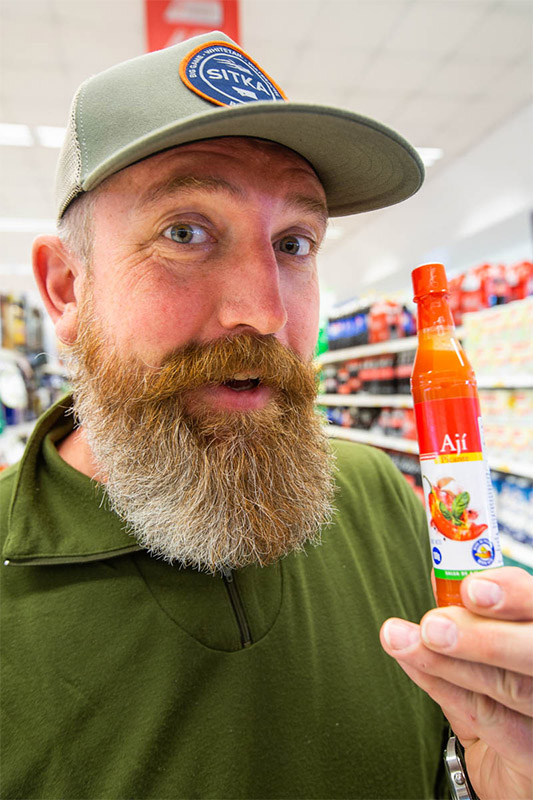
Unusual contents need unusual packaging.
On a dark slate platter in his kitchen, Werner has stacked even darker buns. The buns that will later play host to the finished burgers between their crispy crusts are colored bluish-black by sepia, the ink of squids. “One gram of sepia ink per burger bun,” is what Werner uses, sprinkling each one with sesame seeds. After baking, they look like stubble left in burnt wheat fields. The packaging’s important role in the taste experience is confirmed by the first bite into one of Werner’s Black Magic game burgers. The individual components are delicious and their interplay is a “wild” discovery.
The most important tip for last: Werner’s burger patties do not contain any other ingredients. Season them as you like! But don’t add egg, breadcrumbs, dry bread or similar fillers. “That would be a recipe for meatballs,” said Werner. And to be honest, who puts meatballs on their grill?
By the way: leftover patties that don’t land on the grill or in the frying pan can be separated by waxed paper, vacuum-packed and frozen until the next barbecue. And when it comes to garnishing the burgers: anything goes!
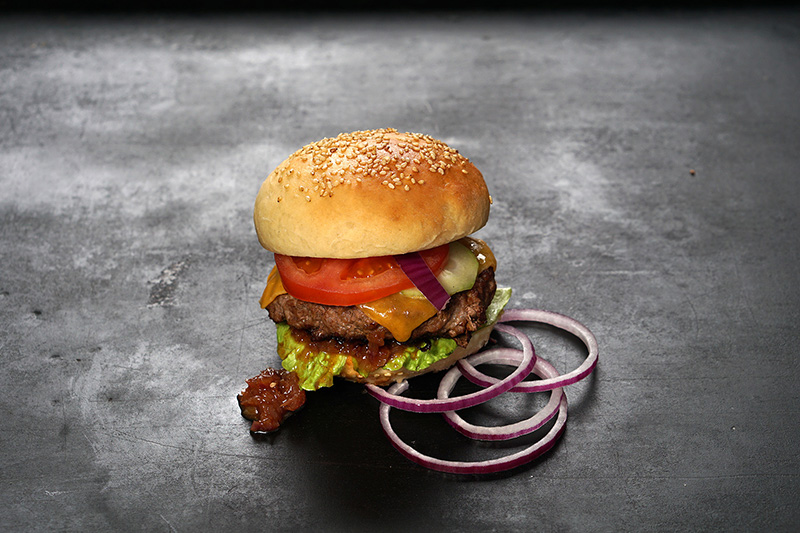
Burger Patties
Burgers normally consist of two ingredients: ground meat shaped into patties (disks) and buns. There’s a simple rule of thumb for determining which types or cuts of game are suitable for creating patties: all parts of meat from which the sweat, glands and sinews have been cleanly removed. Even a boned abdominal wall or doe’s neck can turn into a good burger. Be brave and experiment with various parts of various types of game – you’ll be glad you did! The crucial question is: How do you handle the bacon? You should grind around 20 to 30 percent pork bacon along with the meat of very lean types of game, such as doe, to improve the consistency and taste experience.
Ingredients for the patties
Preparation time: 30 minutes
Cooking time: 10 minutes
- 600g ground wild boar meat/pork bacon (ratio 80:20)
- 4 eggs, fried sunny side up
- 8 strips of bacon
- 4 slices of cheddar cheese
- 2 tbsp. peanut oil
- 4 sepia buns
- BBQ spices
- Lettuce, tomato slices and spices as desired
Method:
Form the meat into four patties of equal size, sprinkle the patties with BBQ spices and place in the refrigerator. Fry the bacon and place on paper towels to catch the grease. Fry the eggs sunny side up in bacon grease and keep warm. Toast the buns. Cook the patties on the grill or in an oiled iron frying pan for around 4-5 minutes. After turning, place a piece of cheese on top of each patty and wait until it begins to melt. Remove the burgers from the grill/pan, place on the bottom half of the bun and add bacon and a fried egg. Add lettuce, tomato and spices as desired, cover with the top half of the bun and enjoy with hand-cut French fries.
Burger Buns
The second, easy-to-produce main ingredient is the burger bun. Of course, “burger bun” typically brings the puffy rolls from the supermarket or fast food counter to mind. But the first bite into a burger in a homemade bun shows just how important the bun’s role is in the overall burger taste experience!
Ingredients for the buns
Preparation time: 15 minutes
Resting time 90 minutes
Baking time: 15 minutes
- 200g buttermilk
- 10g yeast
- 320g flour
- 1 egg yolk
- 50ml water
- 1 tbsp. sugar
- 1 tbsp. salt
- 1 tbsp. white sesame seeds
- 70g melted butter
For black buns:
- 4g sepia ink
- 1 tbsp. black sesame seeds
Method:
Dissolve the yeast and sugar in the lukewarm buttermilk, gradually add the flour and salt while stirring with a hand mixer and dough hook. Knead into a smooth dough for approx. 3 minutes. For black buns, add the sepia ink now. Coat the work surface with flour, place the dough on it and knead for two minutes by hand. Coat the inside of a bowl with flour, add the dough, cover and let rise in a warm spot for an hour. After the dough has risen, knead thoroughly once again. Divide into four portions and make balls. Mix the egg yolk with the water to create a thin liquid that will spread easily. Paint the top of each dough ball with the egg/water mixture and sprinkle with sesame seeds. Cover a baking sheet with parchment paper, place the balls on it, cover with film and let rise for 30 minutes. Preheat the oven to 190 °C (upper/lower heat), push the baking sheet into the center of the oven and bake for around 15 minutes. Place a second baking sheet on the bottom of the oven and pour 100 ml water onto it. After 10 minutes, watch until the buns have turned the right shade of brown and turn off the oven. Remove from the oven, immediately paint with melted butter, cover and let cool. Depending on the color of the buns, sprinkle with black or white sesame seeds.
